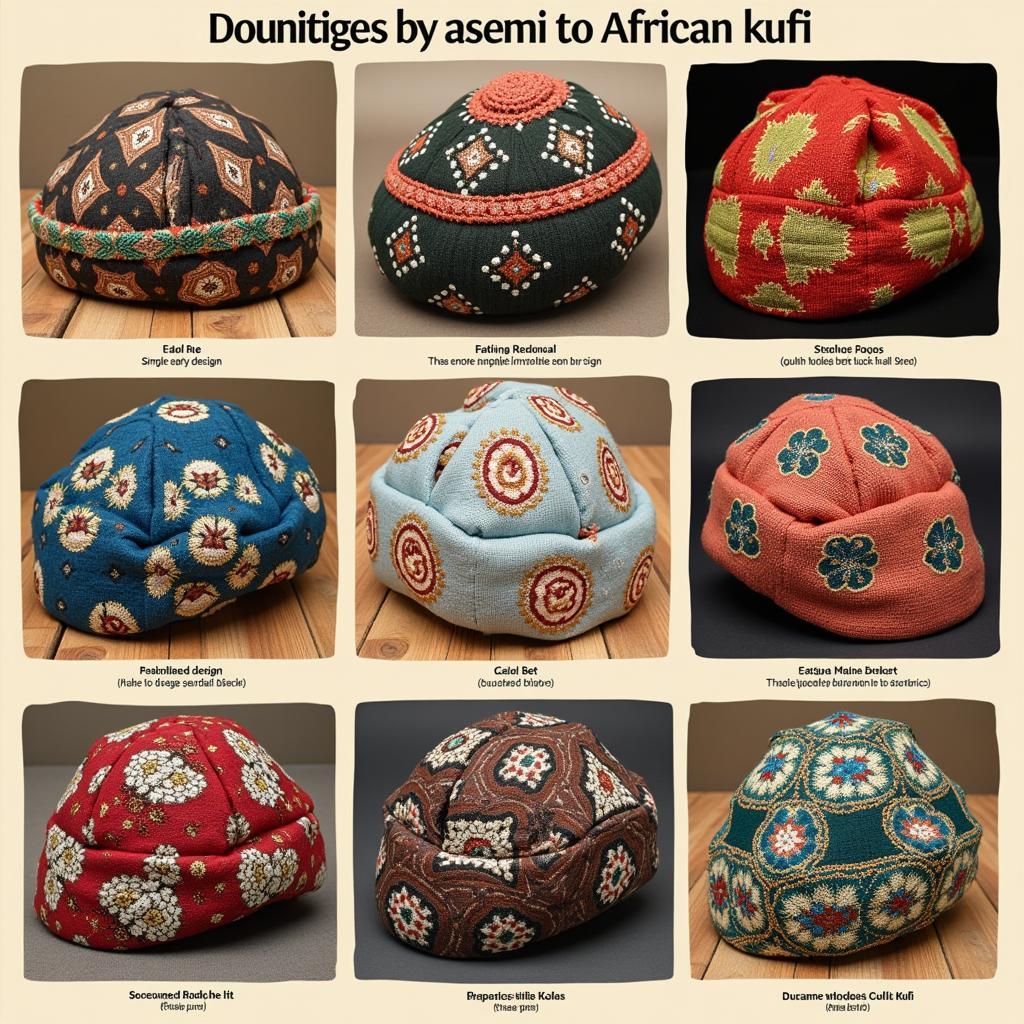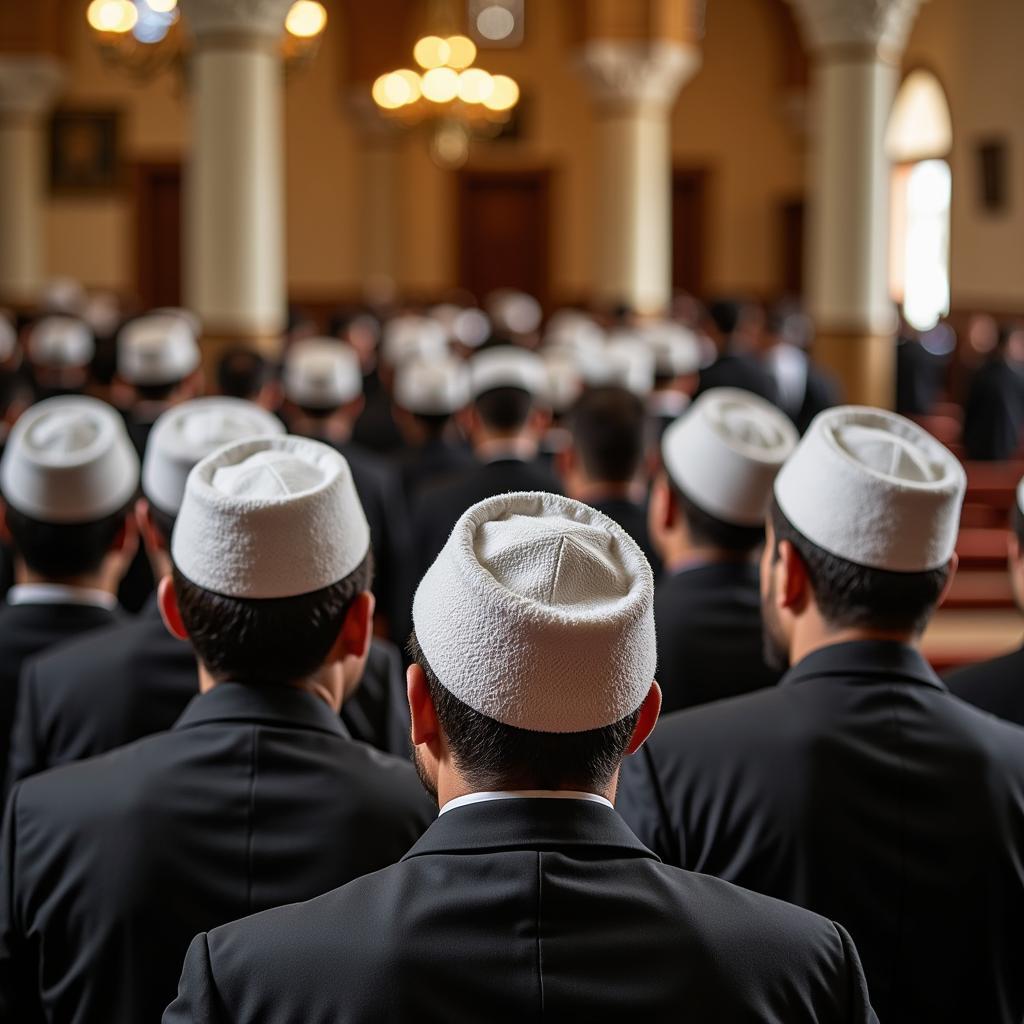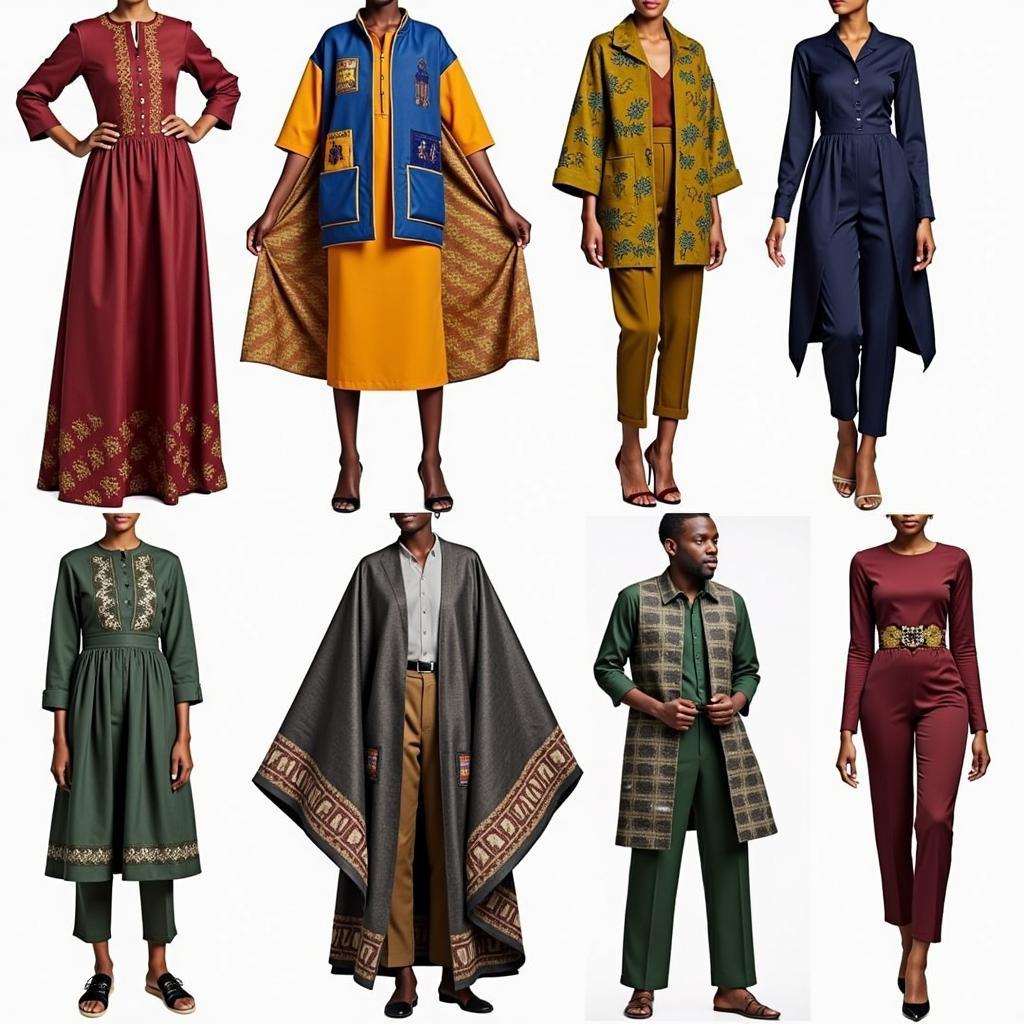Exploring the African Kufi: History, Significance, and Style
The African Kufi is more than just a hat; it’s a powerful symbol of cultural heritage, religious identity, and personal style. This article delves into the rich history of the kufi, exploring its significance across the African continent and beyond. We’ll also look at how the kufi has evolved and adapted, becoming a fashion statement in the modern world.
A Journey Through Time: The History of the African Kufi
The kufi’s origins are woven deep into the tapestry of African history. Evidence suggests its presence dates back centuries, with variations appearing across different regions and cultures. While its exact beginnings remain shrouded in some mystery, it’s clear the kufi has long held a place of importance in many African societies. It has served as a marker of social status, a symbol of religious devotion, and a practical head covering, providing protection from the elements. The kufi’s evolution showcases the adaptability and creativity of African craftsmanship.
From simple, functional designs to intricately embroidered masterpieces, the kufi has always been a reflection of the communities that wear it. It has served as a canvas for artistic expression, embodying the unique cultural identities of various African groups.
You can find a wide selection of African headwear on platforms like Amazon. See some excellent options with this link: african hats amazon.
 African Kufi Historical Evolution
African Kufi Historical Evolution
The Kufi’s Significance: More Than Just a Hat
The African kufi is much more than just a piece of clothing; it’s a symbol imbued with deep cultural and religious meaning. In many West African communities, the kufi is worn by men, particularly during religious ceremonies and important occasions. It signifies respect, dignity, and a connection to one’s heritage. For some, the kufi serves as a visible symbol of their faith, connecting them to a larger spiritual community. The kufi’s significance extends beyond the individual, reflecting communal values and traditions.
The specific meanings associated with the kufi can vary depending on the region, the style, and the materials used. Some styles, for example, are reserved for elders or religious leaders, demonstrating their status within the community.
 African Kufi in Religious Ceremony
African Kufi in Religious Ceremony
The African Kufi in Contemporary Society: Tradition Meets Modernity
Today, the African kufi continues to evolve. While retaining its traditional significance, it has also become a fashion item embraced by people worldwide. From everyday wear to special occasions, the kufi adds a touch of cultural flair and individual style. Designers are incorporating traditional elements with modern aesthetics, creating unique and stylish kufis for a global audience. The kufi’s versatility makes it a popular accessory, worn with everything from traditional African attire to contemporary Western clothing.
For a broader understanding of African fashion, explore the traditional bubu garment: african bubu. It represents another facet of the continent’s rich clothing heritage.
What is an African Kufi?
An African kufi is a brimless, short, rounded cap worn primarily by men in Africa, particularly in West Africa. It holds significant cultural and religious meaning, often worn during ceremonies and special occasions.
What does the kufi symbolize?
The kufi symbolizes respect, dignity, and connection to heritage. It can also represent religious devotion and social status within a community. The african hat has deep roots within the continent’s history and continues to be an important part of various cultures.
How is a kufi worn?
A kufi is typically worn fitted snugly on the head. The specific placement and style can vary depending on cultural traditions and personal preference.
 African Kufi Modern Styles
African Kufi Modern Styles
Conclusion: The Enduring Legacy of the African Kufi
The African kufi has stood the test of time, evolving from a functional head covering to a powerful symbol of cultural identity and personal style. Its rich history, diverse meanings, and enduring appeal make the African kufi a unique and cherished piece of African heritage. From traditional ceremonies to contemporary fashion runways, the kufi continues to hold its place as a symbol of pride, heritage, and connection to the African continent. Understanding the history and significance of the African kufi provides a glimpse into the rich tapestry of African culture.
FAQ:
- What are kufis made of? Kufis can be made from a variety of materials, including cotton, linen, silk, and wool.
- Are there different types of kufis? Yes, numerous styles of kufis exist, varying in shape, size, color, and embellishments.
- Can women wear kufis? While traditionally worn by men, kufis are increasingly being adopted by women as a fashion statement.
- Where can I buy an African kufi? Kufis can be purchased from various online retailers, African marketplaces, and specialty stores. For a unique bohemian wedding touch, consider incorporating African elements: african american bohemian wedding.
- How do I care for my kufi? Care instructions vary depending on the material. Check the label for specific cleaning recommendations.
The intersection of African American culture and Islam is another fascinating area to explore: african american islam. It showcases the diverse religious experiences within the community.
For assistance, contact us 24/7 at +255768904061, kaka.mag@gmail.com, or visit us at Mbarali DC Mawindi, Kangaga, Tanzania.

